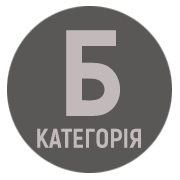Benefits of flipped learning in teaching ESP
DOI:
https://doi.org/10.32782/2617-3921.2023.24.385-395Keywords:
flipped classroom, personalized learning, higher cognitive skills, learning objectives, Bloom’s Taxonomy, pre-class content, in-class activities.Abstract
This article explores the application of Flipped Classroom approach in the context of teaching English for Specific Purposes. The study uncovers the reasons of the already gained popularity of the approach, prioritizing active personalized learning over passive content consumption, it also dwells on the origins, foundations and essential aspects of the flipped classroom methodology. The research emphasizes efficiency of the approach in enhancing teaching and learning English for Specific Purposes. The specifics and common characteristics of the Flipped Classroom approach are determined, benefits and key elements of the methodology are stated and analyzed. As revealed, this methodology can serve as a framework for fostering active engagement, critical thinking, and collaborative learning among students. The shift of traditional content delivery outside the classroom boosts valuable in-class time, enabling teachers to focus on in-depth comprehension, practical application, and skill development. The article also considers the importance of clear learning objectives, elaborate pre-class content, and interactive in-class activities. This paper delves into the specifics of implementing the flipped classroom, identifying its key components and mechanisms. The stages of planning an ESP (English for Specific Purposes) task for a flipped classroom are determined and illustrated. Furthermore, and examples of outcomes (learning objectives) for the task aimed to enhance job-related communication skills for IT students, possible pre-class, in-class and post-class task planning to ensure the achievement of the specified outcomes are provided. This investigation underlines the potential of the flipped classroom as on innovative teaching methodology tailored to the demands of English for Specific Purposes education, where practitioners are equipped with instruments to enhance their teaching practices and optimize student learning outcomes.
References
Anderson L., Krathwohl D. A Taxonomy for Learning, Teaching, and Assessing: A Revision of Bloom’s Taxonomy of Educational Objectives. Boston, MA : Pearson Education Group, 2001. 303 p.
Bergmann J., and Sams A. Flip Your Classroom: Reach Every Student in Every Class Every Day. Washington, DC : ISTE, 2012. Pp. 120–190.
Bergmann J., and Sams A. Infographic: 4 Learning Strategies for Flipped Learning, 2015. URL: https://www.iste.org/explore/In-the-classroom/Infographic%3A-4-learning-strategies-for-flipped-learning
Bloom B.S. (Ed.). Engelhart M.D., Furst E.J., Hill W.H., Krathwohl D.R.
Taxonomy of Educational Objectives, Handbook I: The Cognitive Domain. New York : David McKay Co Inc., 1956.
Brame C. Flipping the classroom. Vanderbilt University Center for Teaching, 2013. URL: http://cft.vanderbilt.edu/guides-sub-pages/flipping-the-classroom/.
Choi J., Kim E. Developing a teaching-learning model for flipped learning for institutes of technology and a case of operation of a subject. Journal of Engineering Education Research, 2015. 18 (2). P. 77–88.
Dunn J. The 6-step guide to flipping your classroom, 2014. URL: https://medium.com/@jdunns4/the-6-step-guide-to-flipping-your-classroom-d721878f85c1
European Commission. Flipped Classroom in Practice. URL: https://ec.europa.eu/programmes/erasmus-plus/project-result-content/17061004-3280-44bc-81ca-463b3f329b5d/Flipped%20Classrom%20in%20Practice%20EN.pdf
Hamdan N., McKnight P., McKnight K., & Arfstrom K. M. The flipped learning model : A white paper based on the literature review titled a review of flipped learning. Flipped Learning Network / Pearson / George Mason University, 2013.
Konoplianyk L., Melnykova K., Pryshupa Yu. Implementing The Flipped Classroom: A Case Study of Teaching ESP to the Bachelors in Automation and Computer-Integrated Technologies. Information Technologies and Learning Tools, 2021. Vol. 83, № 3, p. 192–207.
The Flipped Classroom for English Language Teaching. URL: file:///C:/Users/123/Desktop/flipped%20-%20thesis/oup-focus-flipped-classroom(1).pdf
Програма з англійської мови для професійного спілкування. / Колектив авторів: Г. Є. Бакаєва, О. А. Борисенко, І. І. Зуєнок, В. О. Іваніщева, Л. Й. Клименко, Т. І. Козимирська, С. І. Кострицька, Т. І. Скрипник, Н. Ю. Тодорова, А. О. Ходцева. К. : Ленвіт, 2005. 119 с.



